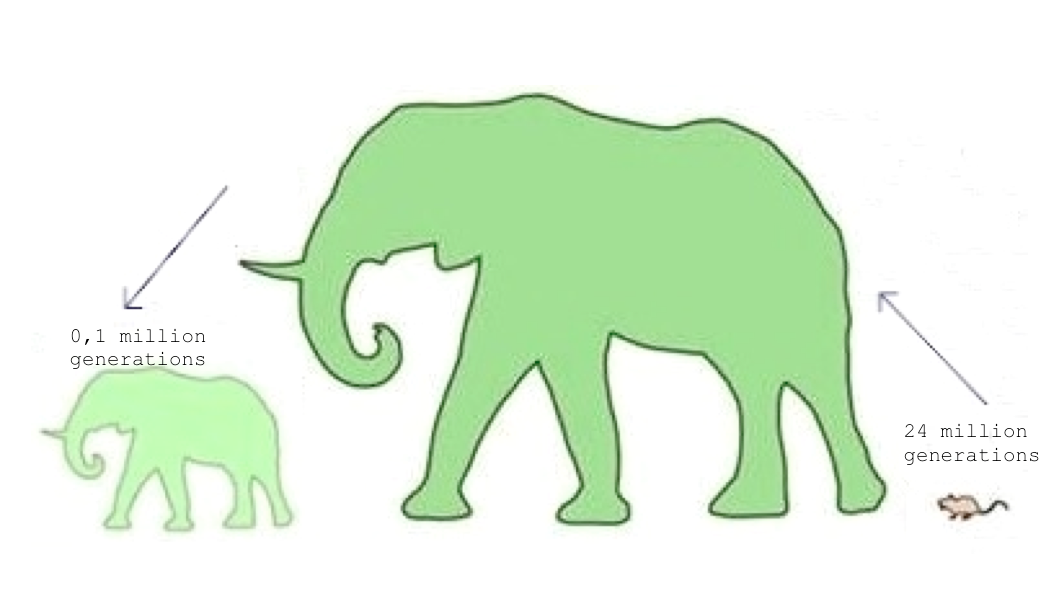
There’s a basic asymmetry in macro-evolution. On the evolutionary scale shrinking is easy and growing large is difficult. This is probably due to the emergence, during a trend of increasing maximum body size, of a series of anatomical, physiological, environmental, genetic and other constraints that must be overcome by evolutionary innovations before further size increases are possible. A much faster rate of change was found for large decreases in body mass, such as may be associated with the phenomenon of insular dwarfism. The maximum rate of body mass decrease is over 30x greater than the maximum rate of body mass increase.
There are several hypothesis on why shrinking is easier. First it may be that there are fewer constraints for decreasing as opposed to increasing size. We can fall back on size formats and solutions of the past. Secondly, changing environmental conditions may favour small species that mature and reproduce faster. Finally decreases in size may reflect adaptation to a more generalised ecological niche whereas increases in size require novel adaptations to obtain more food and space to fuel higher whole-organism metabolic rates. Seen from this perspective many of the solutions we’re seeking today to meet the challenges of food, energy and water scarcity are nothing less than the externalisation of the problems created by the inability of our bodies to make the necessary changes. But if we decided to shrink those challenges would be easily met.
[…] If the human species embraces a desire to become smaller, as it embraced the desire to become taller in the past and present, then it is of some interest to know how fast this desire could influence human size and if desire alone is enough. How fast would evolution respond to a smaller-sized ideal? Will we be able to downsize fast enough that it will have a profound positive effect on man’s … […]